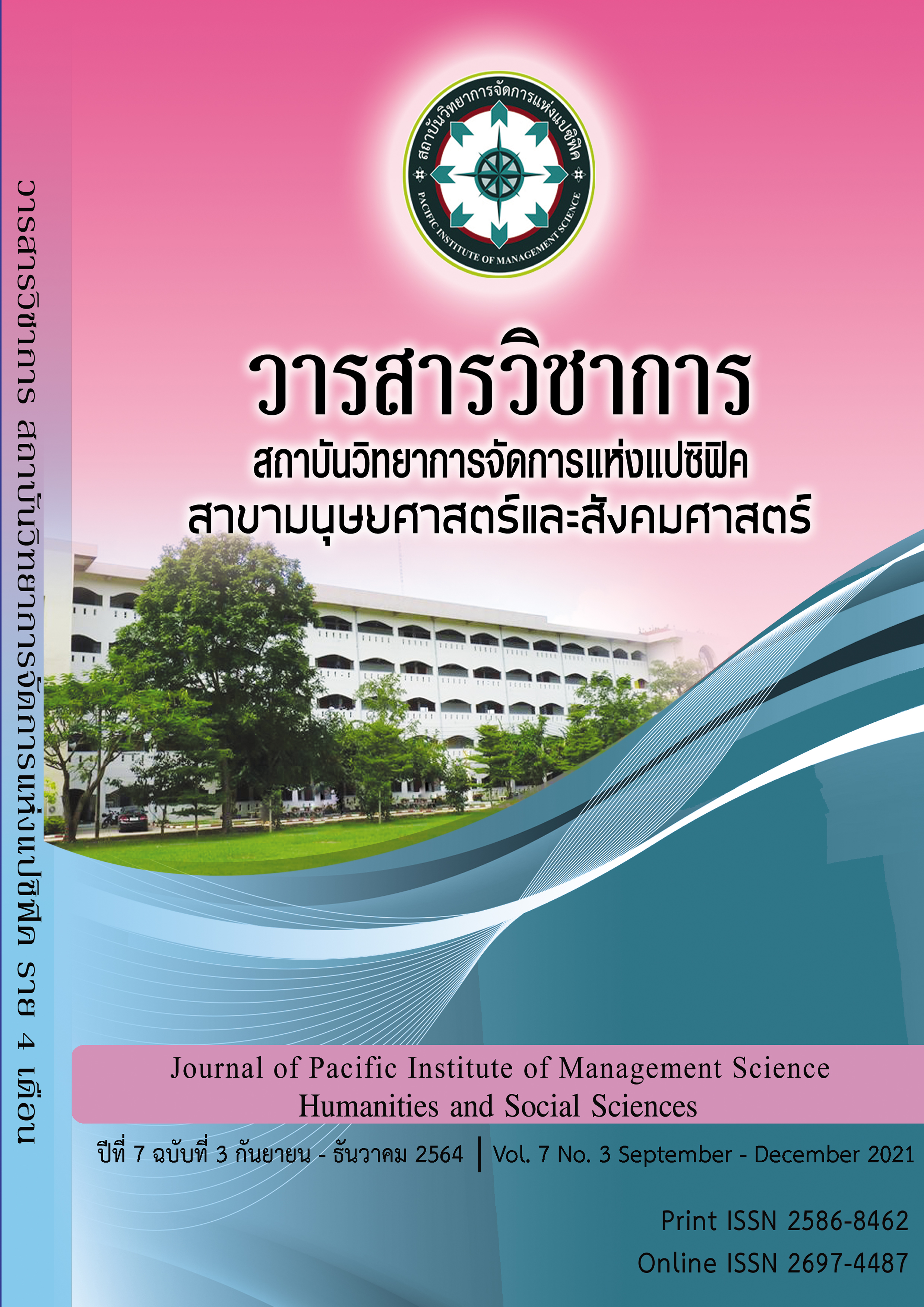Effect of Walking Cane Program in Elderly with Osteoarthritis
Keywords:
Elderly, walking trained by cane program, OsteoarthritisAbstract
This quasi-experimental research two group by pre-posttest design. Aimed to examine the effects of walking trained by cane program. Samples were 54 osteoarthritis patients divided into two groups: an experimental and a control group of 27 subjects at hospital in Mueang district of Prathumthani Province. The researcher-developed study consisted of 1) the walking trained by cane program and 2) Walking cane of behavior questionnaire. The content by 3 experts, found that content validity test was at. 0.89 and 1.00, and reliability test of walking cane of behavior questionnaire were conducted using KR- 20 result was at 0.86. The data was analyzed by using means, standard deviation, and t-test.
The results indicated the following: 1) the average score of walking cane-assisted walking behavior of the experimental group after the program was higher than before the program statistically significant difference at the .05. 2) The average scores of walking behavior scores with walking canes The experimental group after receiving the program was significantly higher than the control group receiving usual care at a statistical significance difference at the .05.
References
จิรพรรณ เขียวขำ. (2553). การใช้แนวปฏิบัติการพยาบาลในการชะลอความรุนแรงของโรคข้อเข่าเสื่อมในผู้สูงอายุในอำเภอชะอำ จังหวัดเพชรบุรี. วิทยานิพนธ์ หลักสูตรพยาบาลศาสตรมหาบัณฑิต สาขาวิชาการพยาบาลเวชปฏิบัติชุมชน มหาวิทยาลัยคริสเตียน
จุฑารัตน์ ประเสริฐ. (2551). การพัฒนาการสร้างเสริมสุขภาพผ้สููงอายขุ้อเข่าเสื่อมในหม่บู้านหันใหญ่อําเภอพล จังหวัดขอนแก่น. (รายงานการศึกษาอิสระ) ปริญญาพยาบาลศาสตรมหาบัณฑิต สาขาการพยาบาลชุมชน บัณฑิตวิทยาลัย มหาวิทยาลัยขอนแก่น.
ธีรพล โตพันธานนท์, นพ. (2559). หญิงวัยหมดประจำเดือน ระวังภัยเงียบโรคกระดูกพรุน. สืบค้นวันที่ 10 กรกฎาคม 2562 จาก http://medicaldevices.oie.go.th/Article.aspx?aid=5405
บุษรา วาจาจำเริญ และคณะ. (2559). คุณภาพชีวิตของผู้ป่วยโรคข้อเข่าเสื่อมในโรงพยาบาลนพรัตนราชธานี. วารสารเภสัชกรรมไทย. 8(2): 230-235.
พนมกร ดิษฐ์สุวรรณ. (2563). การใช้ไม้เท้าอย่างถูกวิธี. สืบค้นวันที่ 10 กรกฎาคม 2562 จาก http://www.bangkokhealth.com/author/
พรพจน์ ภวะเตนัง. (2561). ความฉลาดทางโภชนาการของคนไข้เกาต์ต่อการบริโภคอาหารในเขตศูนย์แพทย์ วัดหนองแวง จังหวัดขอนแก่น. วารสารโรงพยาบาลสกลนคร. 21(2).
ผ่องพรรณ อรุณแสง และคณะ. (2555). ภาพสุขภาพของผู้สูงอายุในสถาบันบริการสุขภาพและในชุมชน.วารสารพยาบาลศาสตร์และสุขภาพ. 35(2): 15-24.
สุกัลยา อมตฉายา. (2559). ผลกระทบของการใช้อุปกรณ์ช่วยเดินต่อความสามารถด้านการเดิน ในผู้ที่มีสุขภาพดี. วารสารเทคนิคการแพทย์และกายภาพบำบัด. 28(1): 92-98.
แสงอรุณ ดังก้อง. (2560). กายภาพบำบัดในผู้ป่วยข้อเข่าเสื่อม. เวชบันทึกศิริราช. 10(2): 115-121.
Bradley SM, & Hernandez CR. (2011). Geriatric assistive devices. Am Fam Physician. 84: 405-411.
Burns N, & Grove SK. (2005). The Practice of Nursing Research: Conduct, critique, & utilization.5th ed. Philadelphia, PA: Saunders.
Patcharawan S, Thaweewannakij T, KaewsanmungS, Kaewjoho C, Saengsuwan J, & Amatachaya S. (2015). Walking devices used by the elderly living in rural areas of Thailand. Malays J Med Sci. 22: 48-54.
Downloads
Published
Issue
Section
License
Copyright (c) 2022 Pacific Institute of Management Science

This work is licensed under a Creative Commons Attribution-NonCommercial-NoDerivatives 4.0 International License.
บทความที่ได้รับการตีพิมพ์เป็นลิขสิทธิ์ของ สถาบันวิทยาการจัดการแห่งแปซิฟิค
ข้อความที่ปรากฏในบทความแต่ละเรื่องในวารสารวิชาการเล่มนี้เป็นความคิดเห็นส่วนตัวของผู้เขียนแต่ละท่านไม่เกี่ยวข้องกับสถาบันวิทยาการจัดการแห่งแปซิฟิค และคณาจารย์ท่านอื่นๆในสถาบันฯ แต่อย่างใด ความรับผิดชอบองค์ประกอบทั้งหมดของบทความแต่ละเรื่องเป็นของผู้เขียนแต่ละท่าน หากมีความผิดพลาดใดๆ ผู้เขียนแต่ละท่านจะรับผิดชอบบทความของตนเองแต่ผู้เดียว







